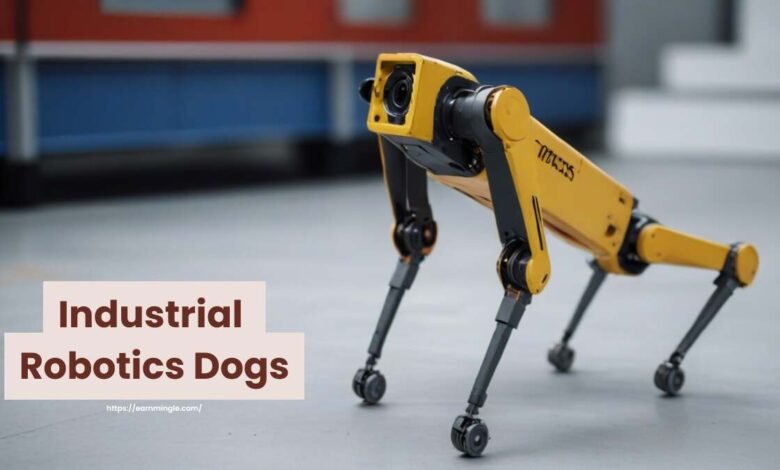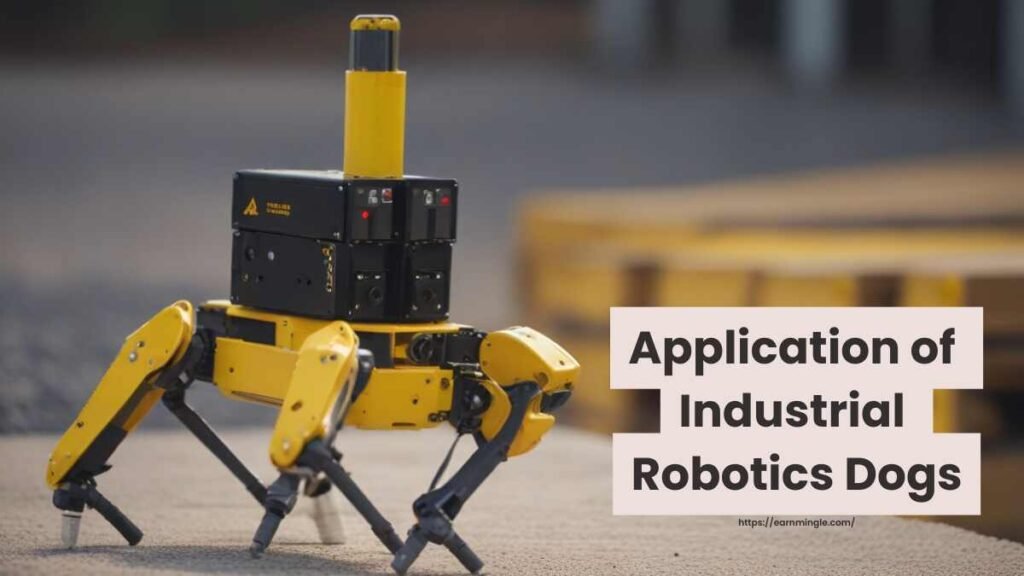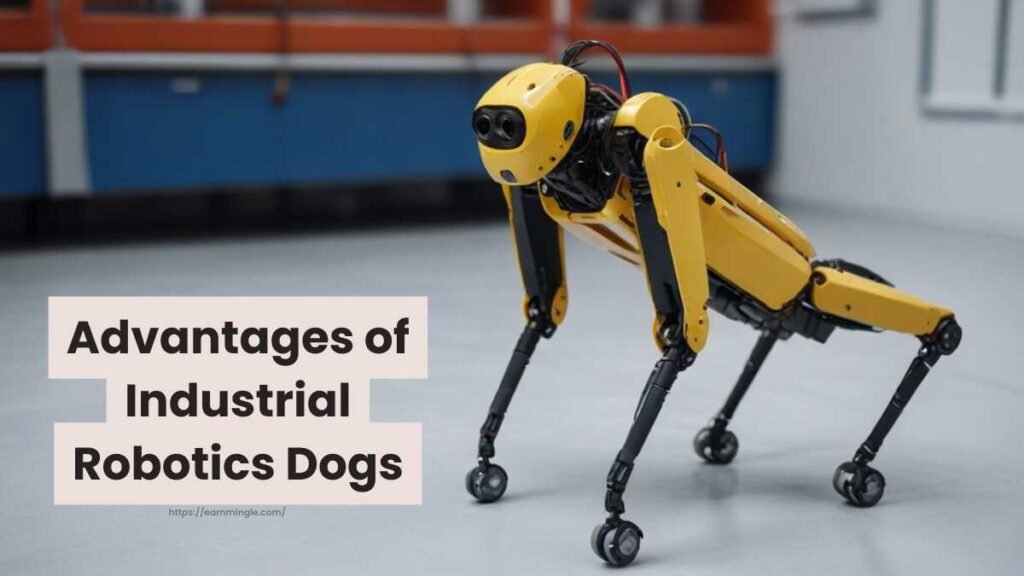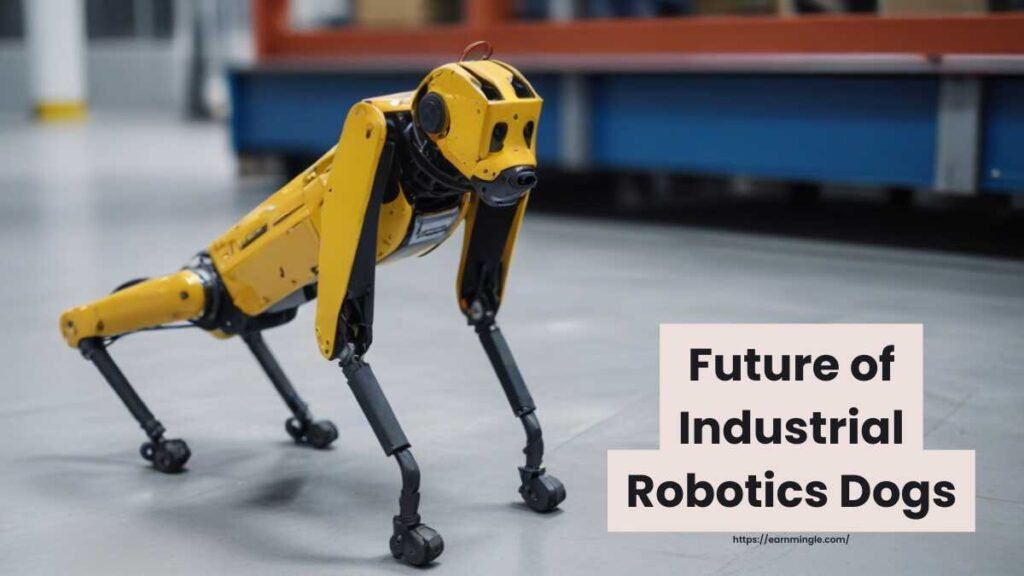Industrial Robotics Dogs: Ultimate Evolution in Robotics Industry
Industrial Robotics Dogs

Industrial Robotics Dogs, Robots that work like dogs take their places among humans in factories, warehouses, and construction sites. No longer limited to a fantasy in science fiction, this is a developing reality. They change the future of automation, providing better solutions to modern industrial challenges.
The Emergence of Industrial Robotics Dogs
The first conceptualization of robotic dog dates way back to the mobile innovation made mainly to tackle rough terrains. Such early versions have developed into more complex industrial models that people use today.
Key Players in the Market
Companies like Boston Dynamics, ANYbotics, and Unitree Robotics have led the way in developing multi-purpose, rugged, and powerful robotic dogs for industrial use.
Technological Innovation in Robotics
Artificial intelligence integration has been a game changer; with it, robotic dogs can learn and evolve at their will.
Sensors and mobility: Advanced sensors allow robotic dogs to navigate complex environments, avoiding obstacles and detecting changes in their surroundings. This mobility makes them ideal for dynamic industrial settings.
Follow Us: Earn Mingle
Application of Industrial Robotics Dog

Manufacturing:
- Assembly Line Efficiency: Robotic dogs can streamline assembly lines by performing repetitive tasks with precision, reducing human error and increasing productivity.
- Quality Control: These robots are fit with some of the high-resolution cameras and sensors to inspect products and ensure that they have no defects.
Warehousing
- Inventory Management: Utilize industrial robotic dogs for tracking inventory—roll along aisles and read barcodes to update an inventory in real-time.
- Loading and Unloading: With their versatility in carrying different things, they are excellent for handling loads that do not have to rely much on human labor.
Construction
- Site Visit: For instance, robotic dogs may visit the construction site, inspecting for safety hazards and ensuring compliance with regulations.
- Material Handling: They will move materials around the site, hence making construction more conducive and efficient.
Health
- Patient Support: In hospitals, robotic dogs can help in transporting medical supplies and assisting patient. Which help us in improving overall efficiency and care.
- Sanitation: They can be put on places for hygiene, disinfect them, and prevent certain kinds of contamination.
Advantages of Industrial Robotics Dogs

- Increased Production: Robotic dogs will replace routine and monotonous chores so that human working forces can be put to more crucial, creative work, thus increasing the total productivity.
- Enhanced Safety: These robots work in dangerous environments. Therefore, the reduction in accidents and injuries by human persons is noted.
- Cost effectiveness: Despite the hefty upfront investment, it is apparently labor cost savings in the long run and additional efficiency benefits that offset the cost of robotic dogs.
Challenges and Limitations
- Technical Challenges: Important technical challenges arise with the development of strong, reliable robotic dogs capable of performing a variety of tasks.
- Economic Factors: High development and deployment costs may also be a barrier of entry, especially for small businesses.
- Ethical Issues: As robotics in the workplace increases, it raises attendant ethics about jobs displaced and the future of work for humans.
Case Studies of Industrial Robotics Dogs in Action
- Success Stories: Several companies have successfully introduced robotic dogs into their businesses, thereby achieving improved efficiency and safety.
- Lessons Obtained: Such case studies would be a gold mine of insights into the practical problems and profits created by the robotic dogs in industrial settings.
Future of Industrial Robotics Dogs

- Predicted Trends: The future looks promising with ongoing and envisaged AI and robotics upgrades that make such robots more versatile and capable.
- Current Research: Current research is focusing on industrial robotic dogs designed to make them more sophisticated and inexpensive. It has to be produced within an even broader spectrum of industry access.
A Quick Look at its Global Impact
As industrial robotics dogs gain acceptance, they are experienced across the globe. With advanced manufacturing sectors happening in countries, such robots take the leading role in changing the face of industrial operations. They give a voice to human ingenuity but are beacons to the future of work. It projects their flexibility and possible engagement into altering several sectors of work.
These robotic assistants will cause a ripple effect across various industries, ensuring higher productivity, safety, and innovation across the world. Human-robotic dog relationships are symbolized in this new dawn through the coming together of technology and human effort to achieve more productivity and safety at the workplace.
Conclusion
Industrial robotic dogs’ step into the automation landscape at a huge leap. The more advanced technology is, the easier it is to integrate multiple industrial applications through these robots to be developed for efficiency, safety, and innovation.
Frequently Asked Questions
- What are industrial robotics dogs and how do they work?
These are advanced robots designed to do exactly what dogs do. They basically mimic the mobility and functionality of dogs. The applications vary from manufacturing to warehousing and construction among others. Quality control, inventory management, and material handling are some of their wide applications.
- What technological advances allow these industrial robotic dogs?
Industrial robotic dogs have AI, advanced sensor systems, and mobility systems that allow them to learn, navigate even the most complex environments, avoid obstacles, and adapt to dynamic industrial settings.
- What industries can most benefit from industrial robotics dogs?
Manufacturing, construction, healthcare, and warehousing are the primary beneficiaries. Such robots boost productivity, ensure a safe environment while minimizing repetitive functions such as inventory monitoring and sanitation.
- What is difficult while using industrial robotic dogs?
Challenges included: the ability to make them more cost-effective in development and deployment, improving technical reliability, and performance, and ethical implications of job displacement and human-robot interaction.
- What will be the future of the industrial robot dogs?
Future breakthroughs for these robots will be AI and robotics, making them versatile, affordable, and wide-ranging. More research should be done in the extension of the capabilities for use in a wider range of industries.
Read More: Chatbots and Artificial Intelligence





